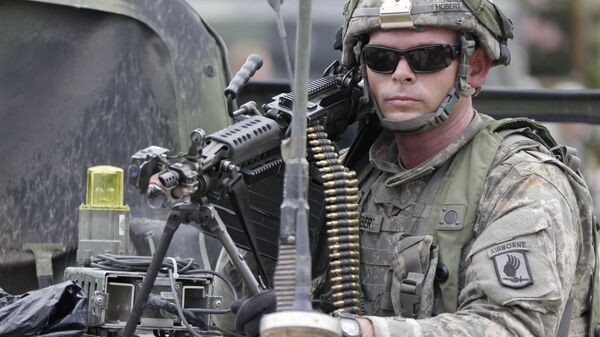The US Army seeks to replace today's M4A1 carbines and M249 light machine guns with a next-gen weapon that will utilize computer systems to allow "unprecedented accuracy," incorporating technology currently deployed on main battle tanks, according to Popular Mechanics.
Currently named the Next Generation Squad Weapon, or NGSW, the program aims to develop two guns to replace squad carbines and light machine guns. Little is known about the planned weapons, but it has been disclosed that they will utilize a new 6.8-millimeter round and lightweight ammunition system and have a reduced acoustic and flash signature. But the main feature is computerized optics.
Currently, main battle tanks utilize computer systems that allow the gunner to adjust their aim based on a wide range of factors, including range, wind speed, barrel temperature and even barrel age. The technology was first introduced in the 1970s — to great effect — but the size and weight of the components meant only heavy vehicles could carry it.
The optics are expected to work with the Integrated Visual Augmentation System (IVAS), a program developed by Microsoft under a $480 million military contract. Basically, IVAS is a heads-up display showing the weapon's reticle and other tactical information on a goggle or eyepiece, Military.com reports.
The weapon, which is supposed to incorporate a wide array of sensors, must be tough enough to withstand combat conditions while remaining relatively lightweight. According to Joe L'Etoile, a veteran Marine officer who leads the Close Combat Lethality Task Force (CCLTF) who was quoted by Military.com, a 7-pound M4A1 carbine sporting all supported attachments becomes an unwieldy, 20-pound monstrosity.
Currently, five companies — AAI Corporation Textron Systems, FN America LLC, General Dynamics-OTS Inc., PCP Tactical LLC. and Sig Sauer, Inc. — are competing for the Army contract. The company whose prototype wins will be awarded a $10 million budget in the first year, and $150 million each consecutive year, according to an October Army Times report.
Came so close to getting space marines. Actually maybe not that close with OICW. pic.twitter.com/Wr026wbHV2
— АCR (@High_Lethality) 7 января 2019 г.
The NGSW program evokes memories of the notorious Objective Individual Combat Weapon (OICW) program, which also sought to create the super-weapon of the future. The OICW, which sought to replace the then-standard M16 rifle, was supposed to be a 5.56-millimeter rifle, crammed together with a 20-millimeter magazine-fed grenade launcher and a high-tech scope featuring a ballistic computer. Though multiple prototypes were produced, they failed to meet cost, weight and even lethality requirements. The program, which cost millions of dollars, was shelved in the 2000s as a failure.



